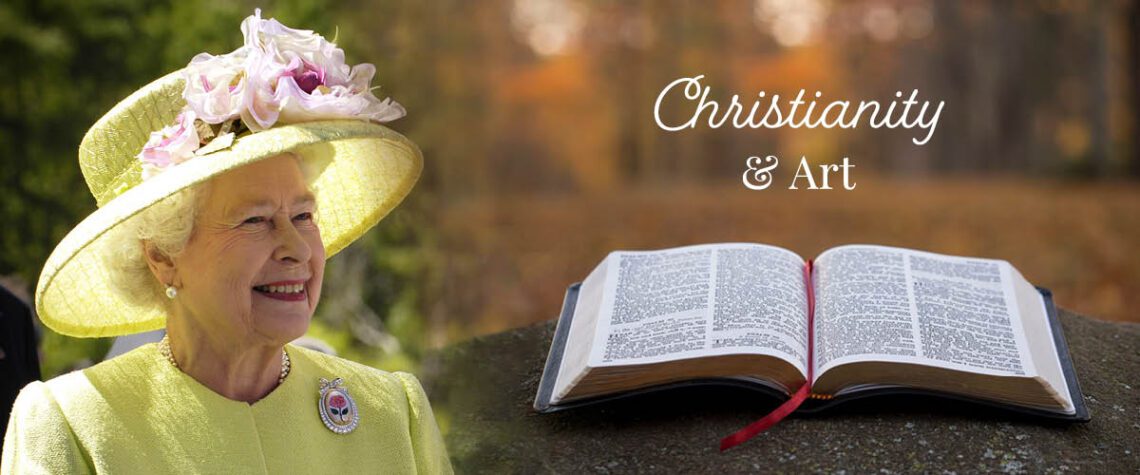
Christianity and Art: The Royal Collection & the Faith of Queen Elizabeth II
Before the printing press and education made the Bible available to all, believers used their eyes and imagination to attempt to understand God. There was a danger of idolatry, which the Reformation sought to address, yet some paintings read like the pages of a book.
On the 13 September 1940, a German bombing raid hit the Private Chapel at Buckingham Palace, London. From the charred remains, the Duke of Edinburgh decided to convert the Chapel into an art gallery and display elements of the Royal Collection. I have been privileged to view the Queen’s masterpieces in several exhibitions in the Queen’s Gallery, and at Buckingham Palace, Windsor Castle and at other locations.
The Royal Collection consists of over one million objects, including 7,000 paintings, 30,000 watercolours, drawings, tapestries, manuscripts, books, Bibles and sculptures. There is a panoply of religious items, pointing to the Christian faith and the hope monarchs have placed in Christ. The faith of Queen Elizabeth II provides strength for Britain’s longest-serving monarch and we know the Queen holds a keen interest in the exhibitions in the Queen’s Gallery.
I know just how much I rely on my faith to guide me through the good times and the bad. Each day is a new beginning. I know that the only way to live my life is to try to do what is right, to take the long view, to give of my best in all that the day brings, and to put my trust in God…I draw strength from the message of hope in the Christian gospel
– Queen Elizabeth II, 25 December 2002
This Christmas, we must reclaim the Mary of Scripture – a young woman called to an extraordinary purpose. She was humble, open to God and willing to obey. I’m reminded of the difference between medieval portrayals of Mary and the account in the gospels. Let’s consider two items from the Royal Collection. First, the Three-fold Crucifixion and other Scenes by Duccios, c. 1302-08, are intended to be viewed in sequence.

The triptych begins with the angel Gabriel announcing the incarnation to Mary, followed by Christ the child with Mary and the crucifixion of the Lord in the centre. On the right panel is St Francis and below, Christ and Mary.
Acquired by Prince Albert, this triptych gained a reputation in the nineteenth century as one of the finest works by Duccio, for its richness and complexity. Modern scholars note the adjustment of internal perspective by the artist, to the angle of the wings of the angel.
Duccio di Buoninsegna was as an innovative painter active in Siena, Tuscany, in the late thirteenth and early fourteenth century. He favoured embellished golden leaf, wood panels, painted in egg tempera and was a master of tempera.
The second piece, The Adoration of the Magi, for me, portrays Mary as a human, just like us. The colour is embellished; they were poor. We are reminded Mary was a very young woman called by God and willing to follow the Master, regardless of the cost. She is an example of faith, obedience and sacrifice. The focus of the piece is on Christ. Keep your gaze on Him.
Now in the sixth month the angel Gabriel was sent by God to a city of Galilee named Nazareth, to a virgin betrothed to a man whose name was Joseph, of the house of David. The virgin’s name was Mary. And having come in, the angel said to her, “Rejoice, highly favoured one, the Lord is with you; blessed are you among women!” (Luke 1:26-29).
Then Mary said, “Behold the maidservant of the Lord! Let it be to me according to your word” (Luke 1:38).

Like Mary, Queen Elizabeth II is a soul dedicated to following the will of her Master, Christ the Lord.
“Although we are capable of great acts of kindness, history teaches us that we sometimes need saving from ourselves – from our recklessness or greed. God sent into the world a unique person – neither a philosopher nor a general (important though they are) – but a Saviour, with the power to forgive. Forgiveness lies at the heart of the Christian faith. It can heal broken families, it can restore friendships and it can reconcile divided communities. It is in forgiveness that we feel the power of God’s love”
– Queen Elizabeth II, 25 December 2011
Whilst researching my book How Christianity Made the Modern World, I investigated Christianity and art for a chapter and toured many galleries. I watched non-believers stand before the paintings of Christ and hoped they pondered their eternal soul. It is a witness I thank God for.
By Paul Backholer. Find out about Paul’s books here.




